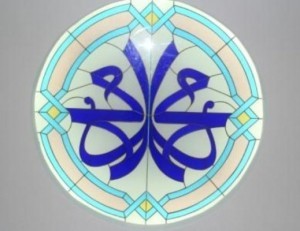
Glass, which is essentially a mineral, gets softer when heated and can easily be processed thanks to its fluidity. This characteristic of glass made it possible to use in many different areas since the ancient times. Glass can be turned into a decorative material by heating up and shaping, by adding subsidiary materials like minerals or alloys or by cutting in various sizes and organizing.
When the glasses produced in different cultures in centuries are examined, it can be seen that glass has been processed and turned into different objects by using methods like glass dough, inner mold, glass mosaic, casting, pressing, blowing and wrapping. Çeşm-i bülbül is also among the important techniques of the traditional Turkish glass art.
Although various types of glass pots were produced in the Seljuk period, it can be seen that colored glasses were mainly used by burying them in the networks of plaster windows of important structures such as mosques and madrassahs of the period. The window glasses buried in plasters with concaved middle parts like an eye and that are thick on the edges are usually cobalt blue, yellow and green. And the pots in forms like ceramic are decorated with techniques such as engraving, ornamenting with colored glasses, sanding.
In the early periods of the Ottoman glass art, the influence of Seljuks can be seen, but over time, an original style was formed by the Ottomans. The glass industry developed especially after the conquest of Istanbul. The names of glaziers are specified in documents belonging to the 16th century. There were glass producers called “camerân” in the palace, and the windows in the palace were mounted by the glaziers working in the glass workshop. At the end of the 18th century, Ottoman glaziery showed a great renaissance. After learning opal glass making technique from Venice in III. Selim period (1789-1807), Mehmet Dede returned to Istanbul and opened the first workshop. Then various other glass workshops that showed different characteristics were opened around Beykoz in İstanbul. Glass products made in İncirköy and Beykoz are called “Beykoz işi” (Beykoz work). In Ottoman glass art; objects such as vases, decanters, rose water bottles, cassolettes, cups, bowls, jam jars, coleman lanterns were produced in different functions for the purpose of everyday use and decoration.




